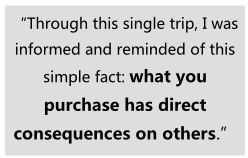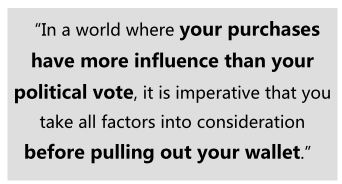Photos, video and article by Scott Umstattd
In January of 2013, I had the opportunity to go with Cafe Campesino on a cooperative tour of Guatemala. Sure, we all know Cafe Campesino makes great coffee and that this great coffee is traded in a way the best serves the farmers who nurture and grow the beans, but to actually go out and meet the people in this supply chain made a tremendous difference in how I view an already superior product and business model.

The group, about ten of us depending on which day we’re talking about, arrived in Antigua, Guatemala, and soon after we began to learn more about this entire fair-trade process. We met with members of the Manos Campesinos Cooperative in Guatemala City to see how coffee beans are sorted and stored in their gigantic warehouse. An interesting note here- security at the warehouse was very tight, as there was literally millions of dollars of green coffee beans being stored. Not sure if you heard about this, but up in Canada a few months back millions of dollars of maple syrup was stolen from a warehouse. There is value in these raw commodities, so securing the beans is actually a very important thing to consider. We also learned that there is often armed security riding alongside and on the large commercial trucks that transport tons of coffee beans across Guatemala. The thought of bean security had never entered my mind prior to taking this trip. Already on day one, I was learning what it takes to make my daily cups of coffee possible. Also on day one, we had a chance to cup Guatemalan coffee. If you don’t know what cupping is all you need to do is think about how wine aficionados taste, swirl and then spit out wine into a cup to make comments like “It tastes woody with hints on berry and smoke.” or whatever wine tasters say after they spit out their wine. Cupping coffee is pretty much the same thing. People with sophisticated pallets taste the coffee and say things like, “It tastes woody with a hint of berry and smokiness.” If you’ve never cupped or seen coffee being cupped, it makes for quite a sight (and sound). You have to forcibly suck in the coffee from a spoon and this sucking sound, that allows just the right amount of air to come in with the coffee, when repeated over and over again, can be quite funny. Already, just on day one, I had learned two things.
While in Xela, Guatemala, we learned from Manos Campesinos that a rare and destructive coffee disease was affecting coffee plants across Guatemala. The Roya disease is a production killer. The leaves of the coffee plants turn to a rust color and fall off the plant. This is a very bad thing, indeed. We learned that, as a result of the Roya disease, production of Guatemalan (and other Latin American coffees) was going to suffer next year. Because I went on this trip, I now know that my Latin America coffee prices are going to rise next year. And more importantly, I know exactly why the prices are going to rise. And even more important still, I know how this is going to affect the coffee growers. Because I took the time to go on this trip, and because I learned first-hand how life on the ground is in Guatemala for all those associated with the coffee industry, I will not complain when my cup of coffee costs a little bit more. If anything, I will purchase this same coffee with more vigor (if you can purchase with vigor) because I know how important I am in this supply chain.
But we didn’t spend all of our time looking at armed security forces and making sucking coffee sounds. We eventually made our way to Chajul, Guatemala, to meet members of the Chajulense Cooperative, another coop that Cafe Campesino has direct personal relationships with. After spending the night in the only “hotel” in Chajul, we made a very exciting trip farther up the mountain to Chel, Guatemala, to meet the farmers who grow the beans for the Chajulense Cooperative and to see the small coffee farms they tend. The ride to and from Chel was most interesting
 as the road, if you can call it a road, was wet (a rare off-season rain was taking place). Rocks scattered the road causing the van driver to make constant swerves and adjustments to his course. We even encountered a landslide on the way back down. But our crack team of road-clearers jumped out of the van, and we did our part to clear the road just enough for ours and other vehicles to keep moving. The trip to Chel was the most memorable part of the trip for a couple of reasons. One, the journey in and of itself was incredible. We were high up and in a very remote part of Guatemala. Because of the location, we got to really see Guatemala and what Guatemalan life is like for many people. Don’t get me wrong, Antigua is great, but it is touristy. Nothing compares to getting off the well-traveled road. And Chel is very much off the well-traveled road. The other part of the trip to Chel that stood out was meeting the farmers and having a glimpse at their daily life. The farmers took valuable time out of their day to lead us to one of their small coffee farms and explained to us how they tend their coffee plants, using only organic methods. For them to do this was a very big deal. These guys are busy. Very busy. And to take the time to meet with us showed how important we are, as consumers, to them.
as the road, if you can call it a road, was wet (a rare off-season rain was taking place). Rocks scattered the road causing the van driver to make constant swerves and adjustments to his course. We even encountered a landslide on the way back down. But our crack team of road-clearers jumped out of the van, and we did our part to clear the road just enough for ours and other vehicles to keep moving. The trip to Chel was the most memorable part of the trip for a couple of reasons. One, the journey in and of itself was incredible. We were high up and in a very remote part of Guatemala. Because of the location, we got to really see Guatemala and what Guatemalan life is like for many people. Don’t get me wrong, Antigua is great, but it is touristy. Nothing compares to getting off the well-traveled road. And Chel is very much off the well-traveled road. The other part of the trip to Chel that stood out was meeting the farmers and having a glimpse at their daily life. The farmers took valuable time out of their day to lead us to one of their small coffee farms and explained to us how they tend their coffee plants, using only organic methods. For them to do this was a very big deal. These guys are busy. Very busy. And to take the time to meet with us showed how important we are, as consumers, to them.
We also went to Panajachel and San Pedro on Lake Atitlan. Lake Atitlan is beautiful. And beautiful isn’t a descriptive enough word (That’s why I am a photographer. When words fail, just look at a picture to get the full meaning.) In San Pedro we visited another coffee warehouse and spoke in more detail about how much work it takes to produce coffee beans. Trust me, growing coffee is not something you simply watch happen. Picking, processing and shipping coffee requires even more work.
I like coffee. I like Cafe Campesino. And because I went on this trip, I now like the people who make Cafe Campesino and my coffee possible. In a world where your purchases have more influence than your political vote, it is imperative that you take all factors into consideration before pulling out your wallet. Through this single trip, I was informed and reminded of this simple fact: what you purchase has direct consequences on others. If you are not able to take a trip like this, please take the time to read more about the products you enjoy. Knowing the supply chain and how it affects those at the bottom is every consumer’s responsibility. Now, I know just how important that is.
Scott is a professional photographer & videographer who is currently living and working in Antigua, Guatemala. He was one of 10 people who accompanied Cafe Campesino to Guatemala in January 2013.

